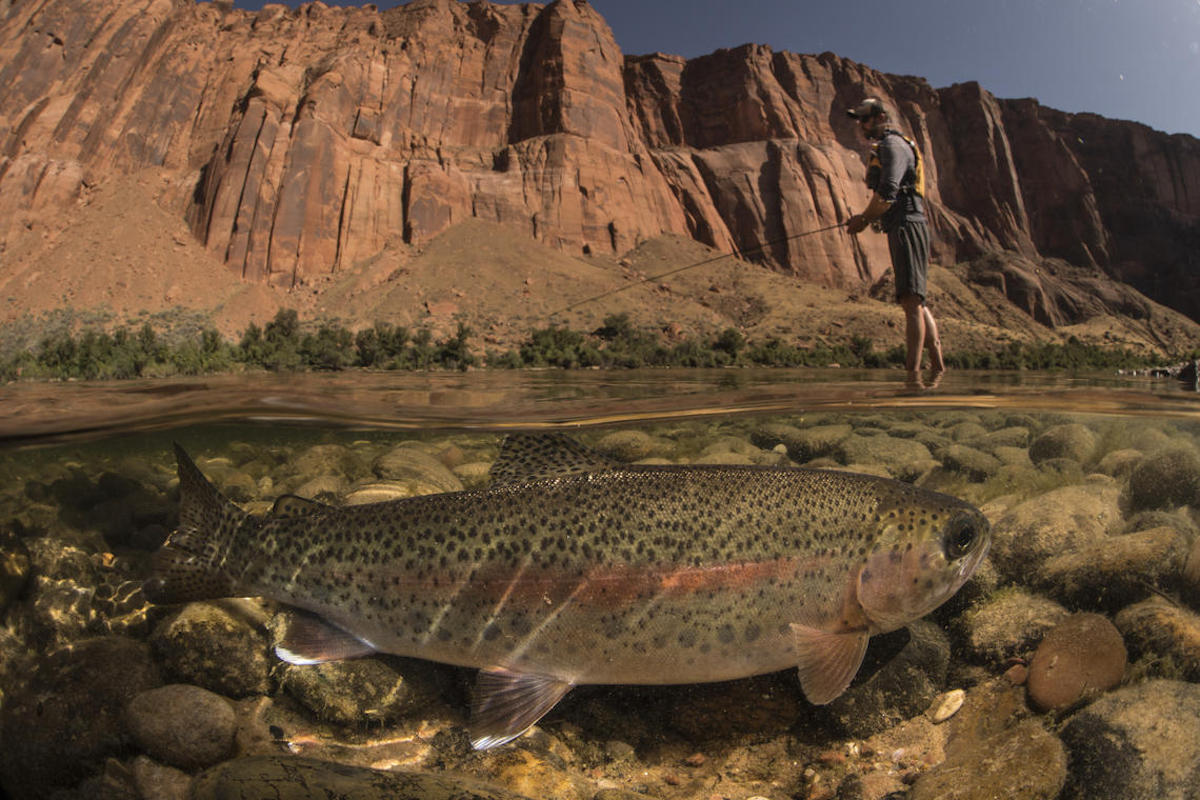Food web dynamics influence mercury movement in Colorado River, Grand Canyon
July 9, 2020

Measuring mercury during normal and high-flow events on the Colorado River
Note: This is a story released by the U.S. Geological Survey, Office of Communications and Publishing
A new study describes how food web dynamics influence the movement of mercury throughout the Colorado River in the Grand Canyon. This new research from the U.S. Geological Survey and partners, including Idaho State University, represents one of the first times that the movement and fate of mercury has been traced through an entire food web.
Mercury is a pollutant that accumulates within the animals that ingest it and becomes more concentrated as it travels up the food chain. Mercury occurs in food webs throughout the world, even in seemingly remote locations such as Grand Canyon National Park.
“Understanding the factors that control the movement of mercury through food webs can help resource managers protect ecosystems that are susceptible to mercury pollution,” said David Walters, USGS scientist and co-lead author of the study.
Scientists examined how mercury moved through Colorado River food webs at six sites downstream of Glen Canyon Dam. Sites ranged from directly downstream of the dam to more than 240 miles downstream. The study looked at mercury movement during normal flows and throughout a high-flow event.
“In this paper, we combined data on mercury concentrations in organisms with ecological information to understand how mercury moves through the Grand Canyon food web,” said Emma Rosi, aquatic ecologist from the Cary Institute and co-lead author of the study. “This new approach to studying contaminants could improve management of contaminants in ecosystems around the world."
Colden Baxter, ISU biological sciences professor, was a co-author on the study.
“The results of this study are exciting because they show how combining ecological and ecotoxicological approaches can yield understanding that would not otherwise have been possible,” Baxter said. “For decades scientists have recognized that contaminants like mercury can have far-reaching effects on the web of life, but this study reveals how characteristics of that web can mediate how these contaminants move, where they end up, which organisms they impact – even the extent to which contaminants move between water and land.”
He said this study was made possible by years of intensive work conducted to quantify the food web of the Colorado River in Grand Canyon, key elements of which were led by Baxter and former ISU graduate students Kevin Donner and Kate Behn.
Aquatic insects have a complex life history with a larval stage that is in water and an adult stage that is on land, or terrestrial. Therefore, adult aquatic insects can transport mercury from rivers to land, making this mercury available to wildlife that eat the insects, such as birds and bats. This study found that the amount of mercury that insects moved from the Colorado River into terrestrial habitats in the Grand Canyon depended on the degree to which their larvae were eaten by fish. If fish consumption of insect larvae was high, very little mercury left the river through adult insects. Conversely, where fish consumption of insect larvae was relatively low, more adult insects emerged from the river and moved mercury to the food web on land.
Invasive New Zealand mudsnails were resistant to predation by fish and created a ‘dead end’ for a large proportion of mercury moving through the food web. In contrast, blackflies are an aquatic insect and are preferred prey of fish. Consequently, they accounted for most of the mercury consumed by fish.
A high-flow release of water from Glen Canyon Dam, known as a High Flow Experiment, was conducted during the study period, which allowed scientists to examine the impacts of the event on mercury in the food web. The HFE affected the movement of mercury by changing invertebrate abundance at different sites along the river. In the simple food web near the dam, the HFE reduced mudsnail populations while enhancing populations of blackflies. These changes resulted in higher mercury consumption in fish due to the increase in blackflies, which had elevated levels of mercury compared to other prey species. Downstream food webs were more complex due to more feeding connections per species and more species overall.
Because of their complexity, downstream food webs were more resistant to the HFE disturbance and the flow of mercury was largely unchanged.
Results from this study may help resource managers understand how dam releases affect mercury uptake and movement through food webs. For example, if dam releases are managed to favor aquatic insects over invasive snails, then that may change the movement of mercury within river food webs. Likewise, dam releases aimed at enhancing fish populations may influence the movement of mercury between the river and terrestrial habitats by altering the number of adult insects that emerge from the river.
This study was done in cooperation with the Cary Institute of Ecosystem Studies, the National Park Service, Montana State University, Idaho State University and the University of Montana Flathead Lake Biological Station.
Categories:
